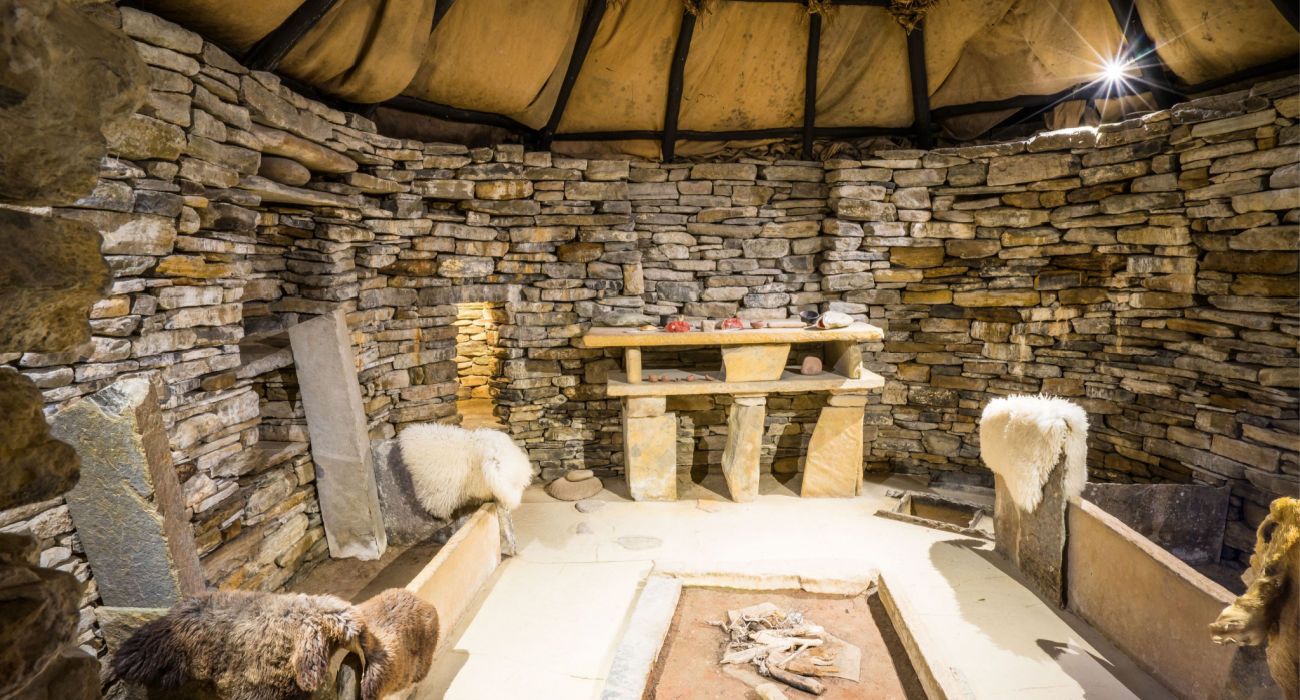Quick Links
The oldest preserved house in Scotland (and indeed in all the United Kingdom) is on the far-flung island of Papa Westray in Scotland's Orkney Islands. The house is an ancient Neolithic farmstead called Knap of Howar, which was occupied before the pyramids of Giza. They offer a peak into what pre-historic Scotland was like - long before England was England or Scotland was Scotland.
If one is planning to visit the Knap of Howar, then one will also visit the Heart of Neolithic Orkney World Heritage Site on the mainland. The site is made up of the settlement of Skara Brae, the Ring of Brodgar, the Stones of Stenness, and the Maeshowe tomb. It is incredible how many Neolithic sites survive in the Orkney Islands.
The Knap Of Howar - The Oldest Standing Home Of Scotland
The Great Pyramid was built between 2560 BC and 2540 BC. The Knap of Howar seems to have been occupied from 3700 BC to 2800 BC - making it about a thousand years older than the pyramids. At around 5,000 years old, it is somewhere around the age of England's famous Stonehenge (which was not built by the druids). Stonehenge is the most accessible and most famous of the UK's famous Neolithic attractions to visit.
- Occupied: From 3700 BC to 2800 BC
- Location: Papa Westray, Orkney, Scotland
The most famous Neolithic ruins in Scotland are at the settlement at Skara Brae on the Orkney Mainland - but the Knap of Howar predates it.
Today the Knap of Howar stands as the best preserved and most visible early Neolithic settlement of Northwestern Europe while being the oldest standing stone building in that corner of Europe.
What To Expect At The Knap of Howar
The ancient Neolithic farmstead is made up of two adjacent rounded rectangular thick-walled stone buildings. To get in, one would need to duck to get through the very low doorways facing the sea. They were constructed on an older midden, and the surrounding midden material has helped to protect the structures. Studies of the middens have indicated that the inhabitants kept sheep, pigs, and cattle while they cultivated barley and wheat and fished and gathered shellfish.
- Number of Buildings: Two
The Neolithic farmsteads did not have windows. Instead, they had a hole in the roof so that the smoke of the internal fire could be let out. Visitors can still see the prehistoric stone furniture that helps give a vivid impression of what life would have been like in the homes long ago. The stone hearth, partition screens, beds, and cupboards are preserved. Thousands of years ago, they would have been further inland than they are today.
The inhabitants of the Knap may have been buried in the chambered cairn at Holm of Papa Westray. The site has not yet been fully explored, and there is still a lot to learn. It is almost certain that the two houses were part of a larger settlement.
Visiting The Knap Of Howar
The Knap of Howar and the island of Papa Westray are well off the beaten track and located on one of Scotland's smaller and more isolated islands. The site is located about a quarter of a mile West of the island's Holland Farm. The Knap of Howar is managed by Historic Environment Scotland - refer to their website for current information about visiting.
Holland Farm is a (comparatively not-so-historic) farm complex whose modern house was built in the early 1800s. Today it is both a working farm and the Bothy Museum.
- Entry Fee: None - Free To Visit
- Opening Times: Year-Round, All The Time
The tiny remote northern islands of Orkney are serviced by Orkney Ferries Ltd and their nine dedicated Inter-Island ferries. Take the time to tour the various islands of the Orkney Islands by ferry. Refer to their published timetables and fares for detailed information.
Visitors can stay at the Papa Westray Hostel. It offers a selection of accommodation options, including six en-suite double/twin & family rooms, plus two camping bothies.
The Orkney Islands have a population of around 22,000, but Papa Westray is a very small affair indeed. Its fertile soil has long attracted inhabitants even though the island is only 2,270 acres in size and has a population of around 90 people. The main attractions on the island are the Holland House and its associated folk museum, as well as the Knap of Howar.

